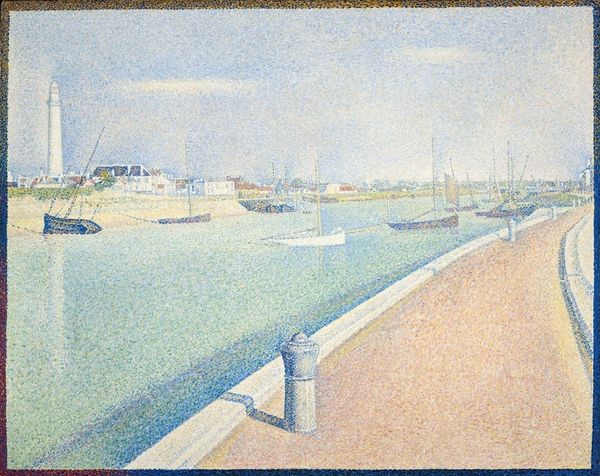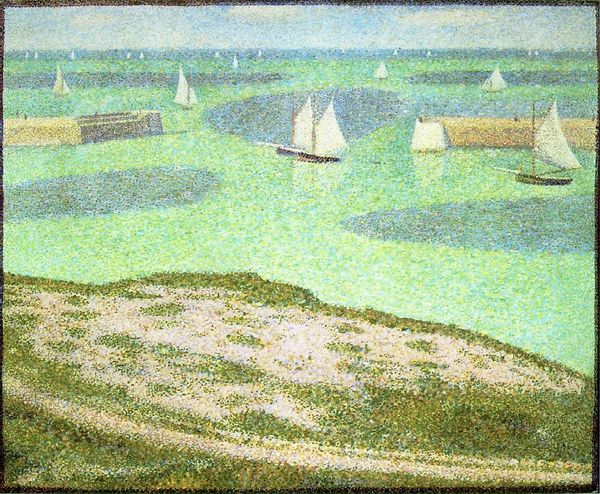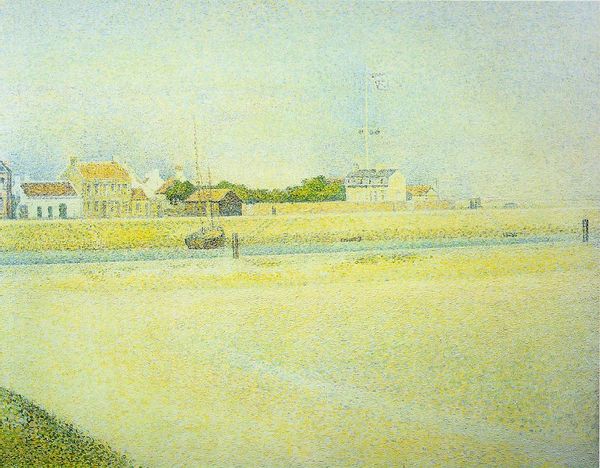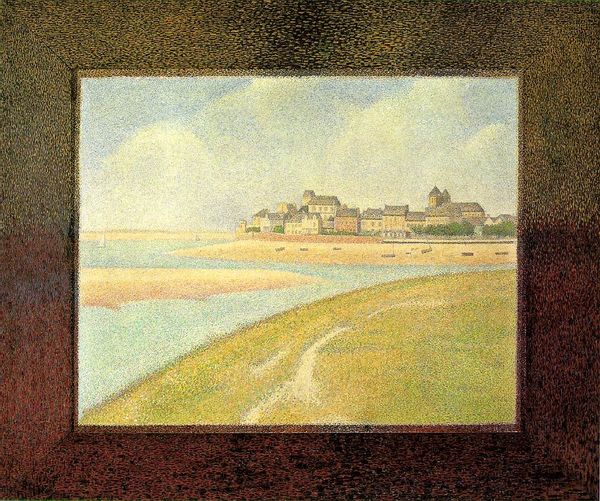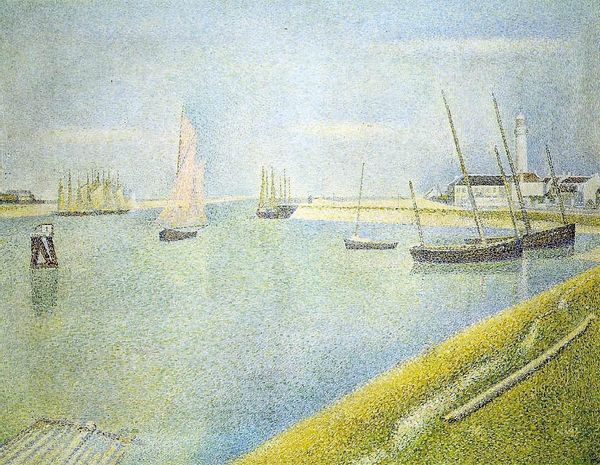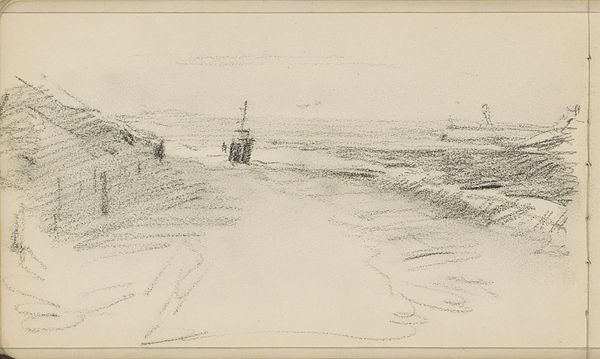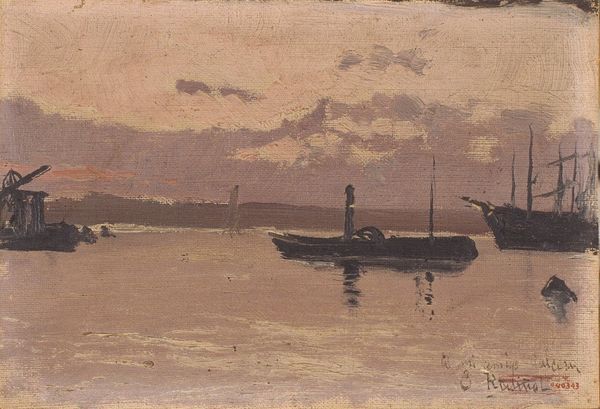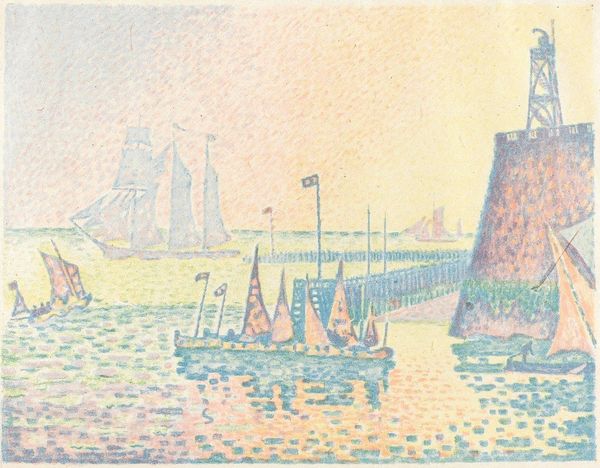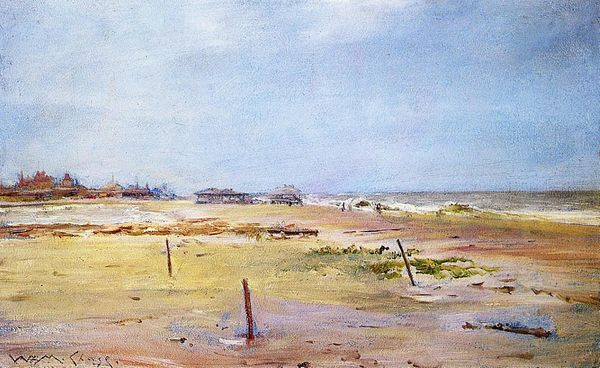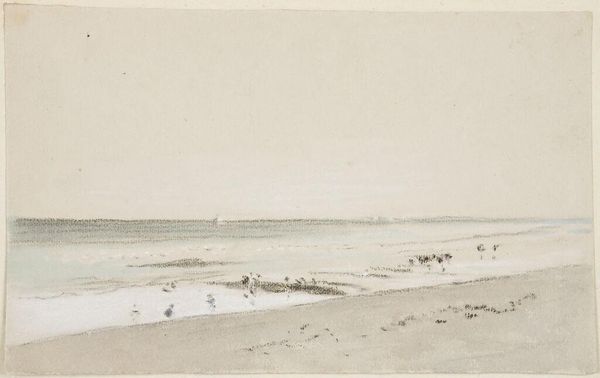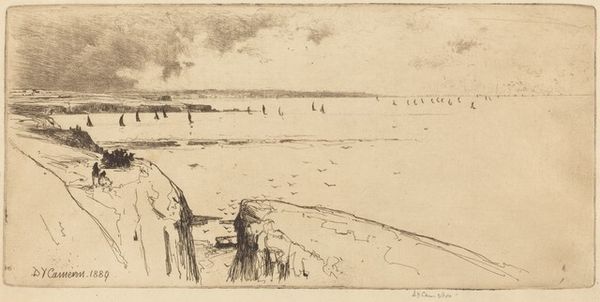
painting, oil-paint
#
painting
#
impressionism
#
oil-paint
#
neo-impressionism
#
landscape
#
house
#
cityscape
Dimensions: 48.2 x 54.5 cm
Copyright: Public domain
Curator: Here we have Georges Seurat’s "View of Crotoy, the Valley", painted in 1889. It's an oil on canvas rendering of a coastal scene, characteristic of his Neo-Impressionist style. Editor: My first thought is—it's surprisingly tranquil. Almost meditative. All those tiny dots blending together… it makes me want to slow down, you know? Like watching the world in super-slow-motion. Curator: It's fascinating how Seurat, drawing on scientific theories of optics and color, could create such a feeling. The pointillist technique was very calculated. He was exploring how juxtaposed colors would blend in the viewer's eye to create a richer, more vibrant experience. In many ways he captured that post-impressionist movement of finding greater definition than his counterparts, Monet and Manet. Editor: Yeah, and it works! Look at the grass—a jumble of greens and yellows, but from here, it's luminous. It's more real than real. Plus there are the boats resting in the distance. Gives a great balance. Like… a really organized dream, maybe? I am dreaming out loud I am afraid, it’s not normally something I do. Curator: No, that is a great point, but I would take a step back here and look closer at its cultural dimensions. Neo-Impressionism, and Seurat’s work in particular, can be interpreted as a reaction against the rapid industrialization and social changes of late 19th century France. This piece might be about a collective anxiety, where viewers might long for a simpler more peaceful state. In essence this becomes an assertion of tradition over radical upheaval and political violence. Editor: Whoa. Heavy. I just saw pretty dots, though that said... Maybe that yearning is there, somewhere beneath the surface for both of us. I suppose all art has these underlying tensions waiting to be examined. Curator: Absolutely, especially from a sociocultural perspective. It's impossible to separate the art from its historical and political moment. Analyzing art's history allows one to reveal social constructs to deconstruct stereotypes. It brings the focus onto the important social narratives in place at the time of the painting. Editor: Okay, okay, Professor! I'm seeing the bigger picture now, or at least, a slightly different angle. This artwork makes me pause, reflect, and maybe question a little about things. The social and personal elements—very important in any piece, especially something from Seurat, that seems to capture multiple perspectives simultaneously. Curator: Well said! A harmonious blend of art historical and contemporary approaches to illuminate how a Seurat masterpiece speaks across the ages.
Comments
No comments
Be the first to comment and join the conversation on the ultimate creative platform.
